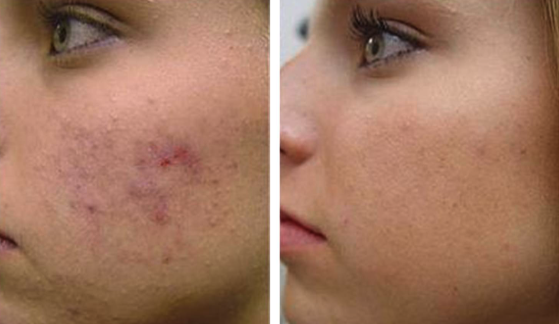Acne can feel like an uphill battle, but there’s good news: treatments like Acne Skin Peels can make a real difference. If you’re new to this option, it might seem intimidating, but with the right knowledge, you can approach the process with confidence. In this article, we’ll demystify Acne Skin Peels, explaining how they work, what they can do for your skin, and what you can expect during and after treatment.
How Acne Skin Peels Work
Acne Skin Peels are a type of chemical exfoliation designed to treat acne and improve skin texture. They work by removing the outermost layer of skin, which helps unclog pores, reduce inflammation, and encourage new skin cell growth. Depending on the severity of your acne and your skin type, your dermatologist may recommend a superficial, medium, or deep peel.
The Ingredients Behind the Magic
Acne Skin Peels often contain active ingredients like:
- Salicylic Acid: A beta-hydroxy acid (BHA) that penetrates deeply into pores to dissolve excess oil and debris.
- Glycolic Acid: An alpha-hydroxy acid (AHA) that exfoliates the skin’s surface, brightening your complexion and fading acne scars.
- Lactic Acid: A gentler AHA, ideal for sensitive skin, that hydrates while exfoliating.
- TCA (Trichloroacetic Acid): Used in deeper peels to target severe acne and scarring.
When applied to the skin, these ingredients work to break down the bonds between dead skin cells, allowing the outer layer to shed naturally. This process not only clears up existing blemishes but also helps prevent new ones from forming.
Why They’re Effective
Acne Skin Peels do more than just clear up acne—they also address the root causes, including excess oil production, dead skin buildup, and bacteria. By improving cell turnover and collagen production, peels can reduce the appearance of scars and leave your skin looking healthier overall.
What to Expect Before, During, and After an Acne Skin Peel
Knowing what to expect can help you prepare for your treatment and set realistic goals. Here’s a step-by-step guide to the Acne Skin Peel experience:
Before the Peel
Preparation is key to a successful treatment. Your dermatologist will likely recommend a pre-peel routine to ensure your skin is in the best possible condition:
- Cleanse Gently: Avoid harsh exfoliants or products with active ingredients like retinoids for at least a week before your peel.
- Protect Your Skin: Apply sunscreen diligently to prevent UV damage, which can interfere with the peel’s effectiveness.
- Communicate Allergies: Be upfront about any allergies or sensitivities so your provider can tailor the peel to your needs.
It’s also important to set realistic expectations. While peels can significantly improve your skin, they’re not a one-time cure-all for acne. Consistency and complementary skincare are crucial for long-term results.
During the Peel
The treatment itself is relatively quick and straightforward, usually taking 20–30 minutes. Here’s what happens:
- Your skin will be cleansed to remove oil and debris.
- The peel solution will be applied with a brush or cotton pad.
- You might feel a tingling or warming sensation as the peel works its magic.
Depending on the type and strength of the peel, the solution may be neutralized after a few minutes, or it may remain on your skin to self-neutralize. Don’t be alarmed if your skin feels tight or looks slightly red afterward—this is normal and temporary.
After the Peel
Post-peel care is crucial for a smooth recovery and optimal results. Here’s how to care for your skin in the days and weeks following treatment:
- Moisturize and Soothe: Use a gentle, hydrating moisturizer to combat dryness or flaking.
- Avoid Sun Exposure: Your skin will be more sensitive to UV rays, so wear a broad-spectrum sunscreen and avoid direct sunlight.
- Resist the Urge to Pick: Let your skin shed naturally to avoid irritation or scarring.
It’s normal for your skin to peel lightly for a few days after treatment. This shedding is a sign that the peel is working, revealing fresh, healthier skin underneath. Most people notice improvements in texture and tone within a week, with continued results over time.
Why Consider Acne Skin Peels?
Acne can take a toll not just on your skin but also on your confidence and mental health. Acne Skin Peels offer a targeted, effective solution for reducing breakouts and improving skin clarity. By understanding how these treatments work and what to expect, you’re already taking the first step toward healthier, happier skin.
Ready to give it a try? Acne Skin Peels might just be the game-changer your skin has been waiting for. Talk to a dermatologist or skincare professional to find the right peel for your needs. Your journey to better skin is just around the corner!
